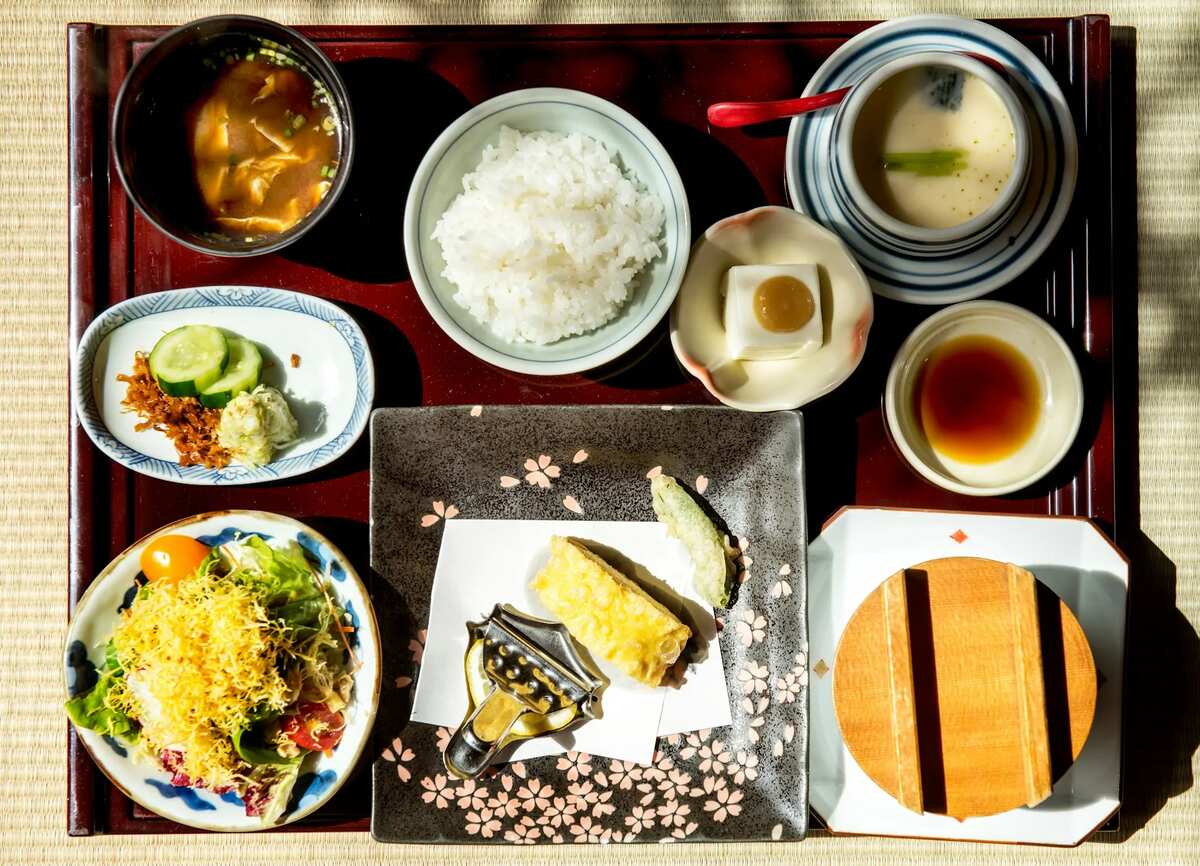
IT DOESN'T COME IN A SLEEK BOTTLE. It doesn’t involve kale in unspeakable forms. And it doesn’t promise six-pack abs by Thursday. But the Okinawa diet — an eating pattern inspired by the traditional food habits of the Okinawan people in southern Japan — is quietly emerging as one of the most respected, evidence-backed approaches to eating well and living long.
And here’s the kicker: it’s delicious.
So what is this centuries-old island wisdom that’s got everyone from nutritionists to longevity-obsessed corporate junkies paying attention? We break it down for you.
It's From the Island Where People Forget to Die
Okinawa isn’t just a dot on the Japanese map — it’s one of the world’s five Blue Zones, regions where people routinely live into their 90s and 100s, with shockingly low rates of chronic disease. The average life expectancy here used to be the highest in the world, particularly among women.
In fact, Okinawan women are four times more likely to reach 100 than women in the United States.
What’s their secret? A blend of daily movement, close community ties, and, yes, a diet that’s light, plant-forward, and subtly powerful.
Think Plants, But With Umami
The traditional Okinawan diet is around 90-95% plant-based, rich in vegetables, legumes, and whole grains. But this isn’t some sad, leafy affair. The Okinawan plate brims with flavour — earthy miso, sweet roasted purple yams, seaweed briny with ocean memory, and tofu so tender it wobbles like custard.
Sweet potatoes (not rice!) are the starchy star here. Specifically, a purple variety called imo, which is high in anthocyanins, the same antioxidant compounds that give blueberries their superfood halo.
Throw in bitter melon (known locally as goya), turmeric, and the occasional bit of fatty fish or pork belly, and you’ve got yourself a flavour profile that feels both ancient and entirely Instagrammable.
Hara Hachi Bu: The 80% Full Rule
If there’s a mantra to the Okinawan approach, it’s hara hachi bu — a Confucian teaching that means “eat until you are 80% full.” It’s not just poetic; it’s backed by science.
Caloric moderation, when combined with high-nutrient food, has been linked to slower ageing and reduced risk of age-related diseases.
Imagine listening to your body before it hits the food coma zone. That’s the Okinawan way.
Tofu, But Make It an Artform
Okinawans eat a lot of tofu — more than almost anyone else in Japan. And this isn’t your average beige brick from the supermarket.
They prepare it in multiple ways: stir-fried with vegetables (chanpuru), deep-fried with seaweed, and simmered with spices. It’s protein-rich, low in saturated fat, and — bonus — contains isoflavones, which may support heart health and hormonal balance.
It's tofu with soul.
It’s Low in Calories, High in Wisdom
Traditional Okinawan meals are nutrient-dense but low in calories, thanks to the sheer volume of vegetables, seaweed, and legumes involved.
Estimates suggest the traditional Okinawan diet averaged just 1,800 calories per day, yet provided abundant micronutrients — vitamin C, calcium, magnesium, and potassium among them.
This is the sort of eating that supports cellular repair, reduces inflammation, and helps prevent diseases like diabetes, cancer, and cardiovascular disease, without being militant about it.
There’s a Beautiful Absence of Processed Food
In Okinawa, food comes from the ground, the sea, and the neighbour’s garden. You’d be hard-pressed to find ultra-processed snacks, sugary sodas, or industrial seed oils in a traditional Okinawan kitchen.
Instead, they sip on sanpin-cha — a jasmine-infused green tea rich in catechins that help protect the heart — and snack on seaweed, which brings iodine, fibre, and trace minerals to the party.
The absence of junk isn’t a restriction here; it’s just a lifestyle. One that doesn’t chase fads, but quietly sidesteps the health chaos of modern diets.
It’s Not Just a Diet, It’s a Way of Life
This might be the part that doesn’t fit neatly into a Western wellness box. In Okinawa, eating well isn’t a performance; it’s woven into the culture.
People eat together. They tend to their gardens. They express gratitude before meals with a humble itadakimasu. And food is never just fuel; it’s a shared ritual.
This cultural intimacy around eating contributes as much to longevity as any vitamin or anti-inflammatory spice. Studies even show that social connection — another Okinawan strength — is a major factor in long-term health outcomes.
It’s Slowly Going Global (But Can It Stay Authentic?)
From Netflix documentaries to macrobiotic restaurants in Berlin and San Francisco, the Okinawa diet is having its moment. But like all traditional foodways that get exported, it’s worth asking: can it stay true to its roots?
As interest grows, so does the temptation to strip away the nuance, to bottle it as a superfood smoothie or flatten it into another “Asian-inspired” bowl.
But the real magic of the Okinawan diet isn’t in a recipe, it’s in its rhythm. Its respect for seasonality, its sense of enoughness, and its ability to nourish without overwhelming.
How to Try It (Without Booking a Flight to Naha)
You don’t need to go full monk-mode. Here are some gentle Okinawan-inspired changes that could actually stick:
- Swap rice for sweet potatoes (roast them with sesame oil and miso for an addictive side).
- Try bitter melon stir-fried with egg and tofu (goya chanpuru).
- Use turmeric generously, especially in soups and stews.
- Drink sanpin-cha or green tea in place of sugary drinks.
- Eat mindfully — stop at 80%.
- Cultivate community around meals — no phones, no rushing.
The Takeaway?
What the Okinawa diet offers isn’t a promise of eternal youth or six-pack abs. It’s something gentler, and in many ways more radical: the possibility of ageing well, living fully, and finding joy in the everyday act of feeding yourself and your people.
It’s not about hacking your biology. It’s about honouring it.
In a world obsessed with shortcuts, the Okinawan way is a long, slow, savoury exhale.